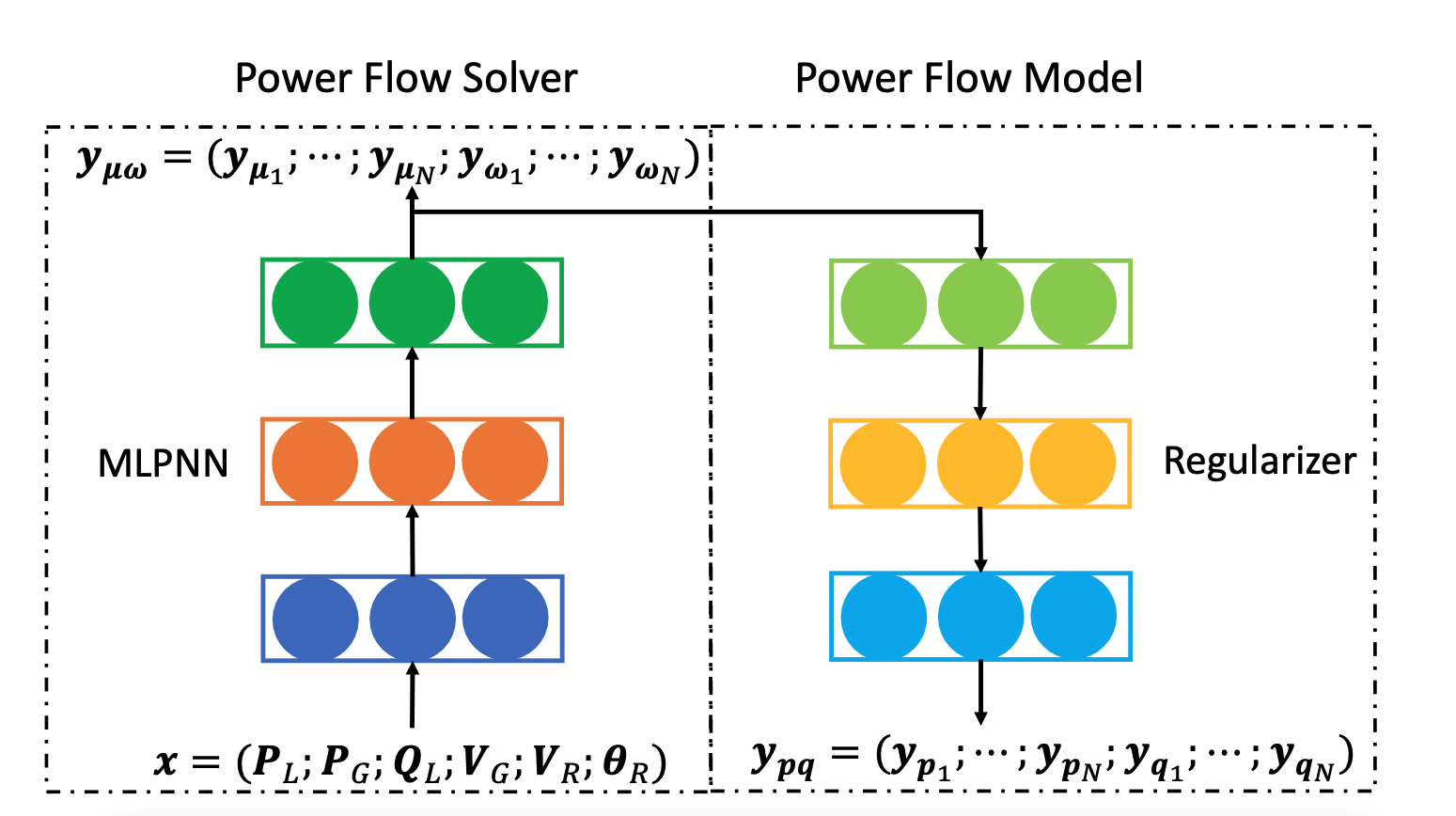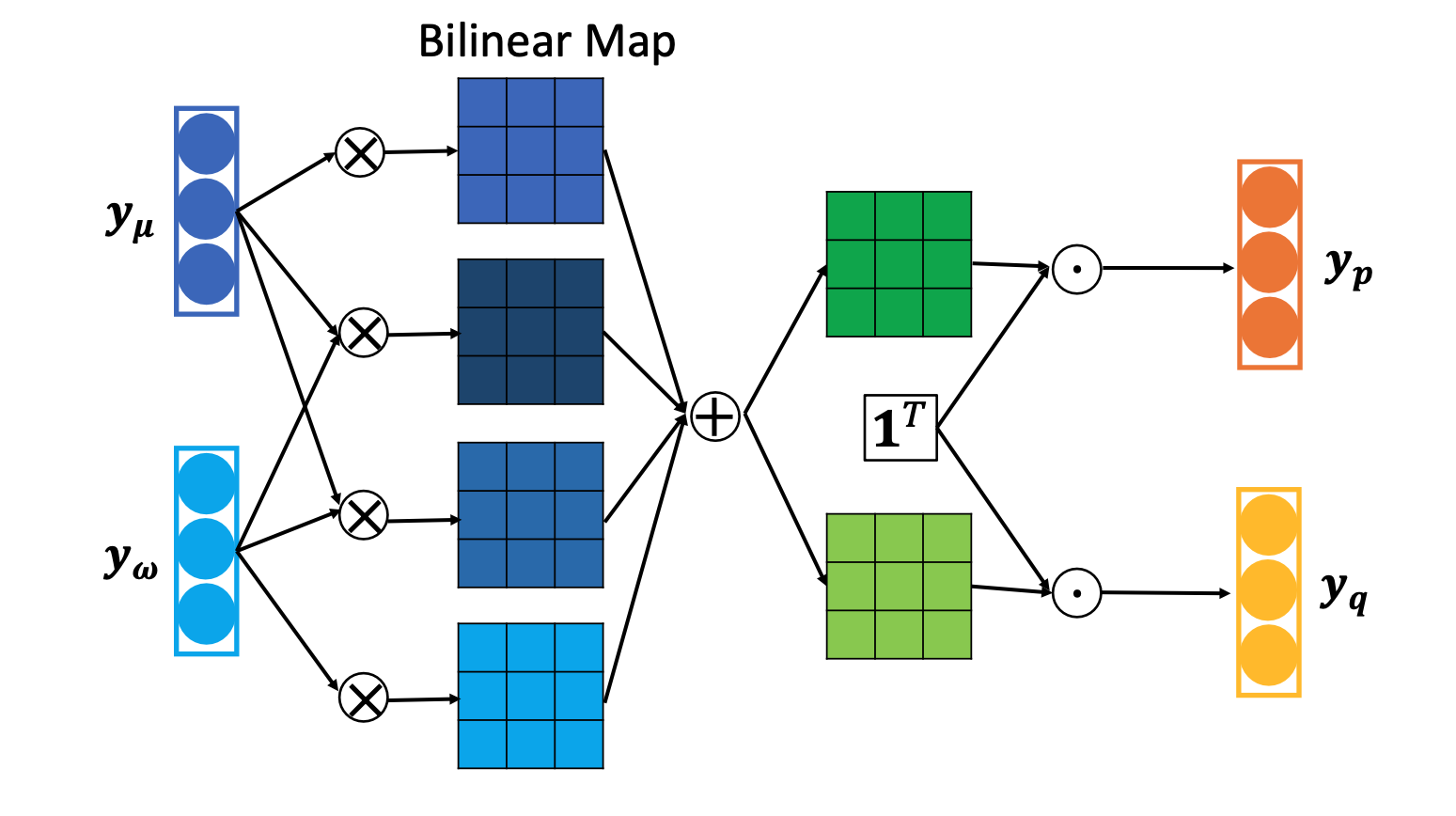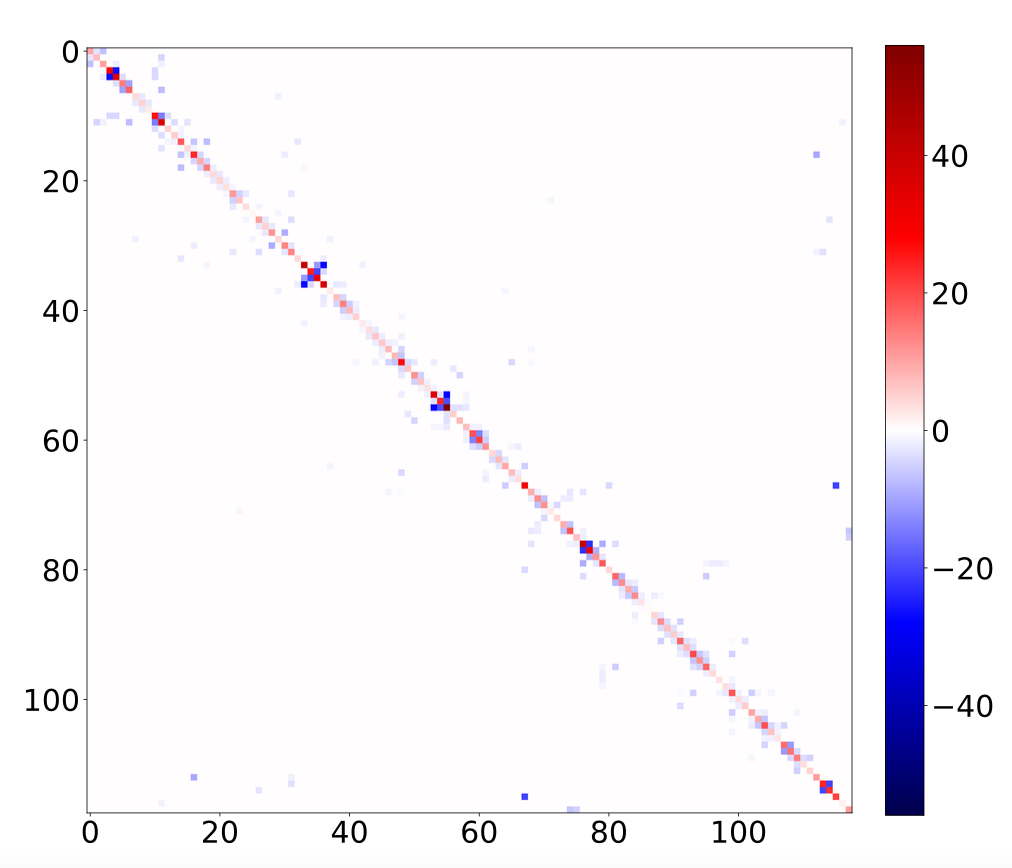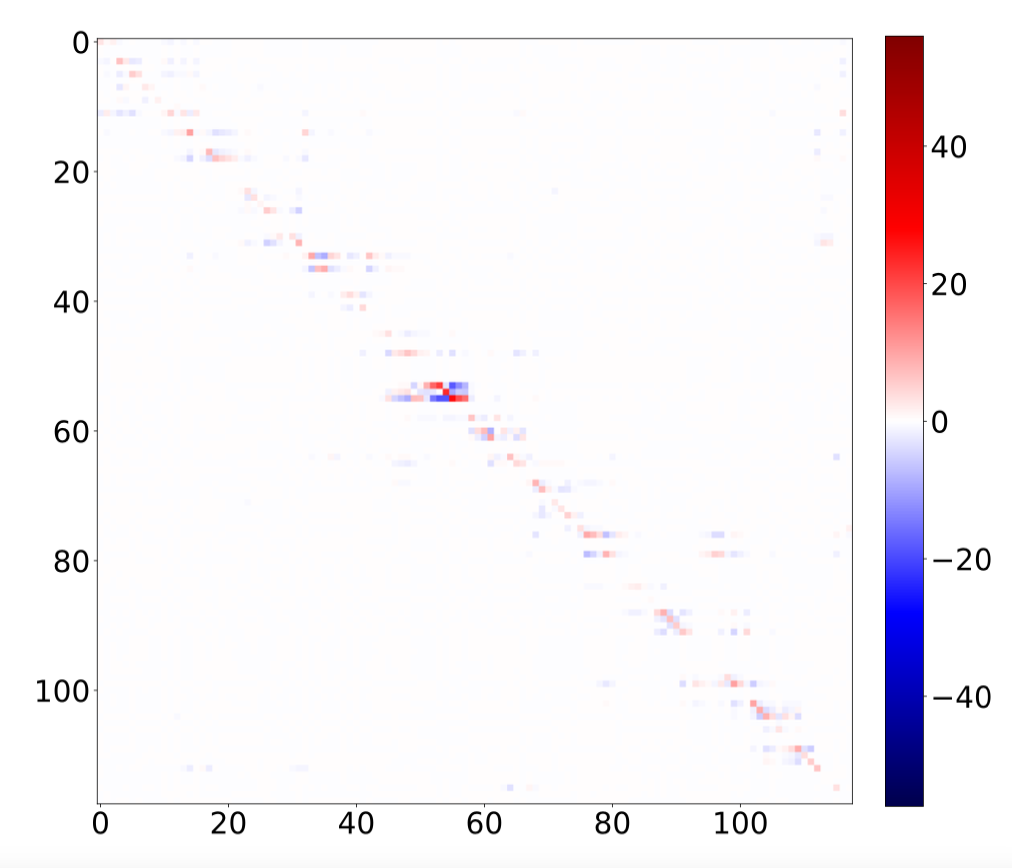An AutoEncoder-based PF modeling and solver for dynamic and uncertain power systems, published in paper Physics-Guided Deep Neural Networks for Power Flow Analysis (IEEE Transactions on Power Systems 2020).
| Kirchhoff’s laws has been integrated into the design of neural network | System topology knowledge has been integrated into the design of AutoEncoder |
|---|---|
 |
 |
By integrating physics knowledge, the weight matrices of AutoEncoder embody power system physics. See an example on IEEE 118-bus power system:
| Real Admittance matrix G | BNN parameter matrix |
TPBNN parameter matrix |
|---|---|---|
 |
 |
 |
- Data and instructions are released in the data folder.
- We use the real-world power load/consumption dataset from Kaggle and PG&E.
- Power system simulator: MATPOWER.
- Dataset specification for NNs is defined in data preprocessing. You should transform your raw data to the dataset specification.
- The code to extract the admittance matrix (topology info) from MATPOWER case specification is contained in the power_flow_equation file.
- Basic Classes and functions are released in the src folder.
- The MLPNN black-box PF solver is contained in the inverse file.
- The MLPNN, BNN, TPBNN PF modeling NNs are contained in the forward file.
- The autoencoder-structure PF solvers (i.e., MLP+MLP, MLP+BNN, MLP+TPBNN) are contained in the autoencoder file.
Checkpoints contains a pretrained TPBNN and a pretrained MLP+MLP solver.
If you find this work useful for your research, please cite:
@article{hu2020physics,
title={Physics-guided deep neural networks for power flow analysis},
author={Hu, Xinyue and Hu, Haoji and Verma, Saurabh and Zhang, Zhi-Li},
journal={IEEE Transactions on Power Systems},
volume={36},
number={3},
pages={2082--2092},
year={2020},
publisher={IEEE}
}